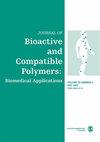环氧氯丙烷交联β-环糊精纳米颗粒(βCDNPs)的肾毒性降低及其与疏水性化合物的结合力增强
IF 2.1
4区 生物学
Q3 BIOTECHNOLOGY & APPLIED MICROBIOLOGY
引用次数: 0
摘要
本文探讨了用于给药的环氧氯丙烷交联β-环糊精纳米粒子(βCDNPs)的开发和表征,重点关注其与疏水性药物的相互作用以及生物相容性。我们使用β-环糊精(βCD)和环氧氯丙烷(ECH)合成了βCDNPs。我们的研究评估了 βCDNPs 的生物相容性和安全性,特别是在避免与 βCD 常见的肾毒性方面,我们研究了 βCDNPs 与胆固醇的相互作用,并对不同剂量浓度的小鼠进行了存活率分析。此外,与溶解度法、约伯图分析法和等温滴定量热法(ITC)相比,我们强调了使用扩散有序核磁共振波谱(DOSY)测定 βCDNPs 与疏水性化合物的增强结合常数的优势。与单独的 βCD 相比,我们证明了 βCDNPs 的结合能力增强,并确定了 βCD 的聚合是这种增强的一个重要因素。我们的研究结果表明,βCDNPs 具有更好的溶解性、稳定性和安全性,有望成为一种药物输送系统。本文章由计算机程序翻译,如有差异,请以英文原文为准。
Reduced nephrotoxicity of epichlorohydrin-crosslinked β-cyclodextrin nanoparticles (βCDNPs) and its enhanced binding with hydrophobic compounds
This paper explores the development and characterization of epichlorohydrin-crosslinked β-cyclodextrin nanoparticles (βCDNPs) for drug delivery, focusing on their interaction with hydrophobic drugs and biocompatibility. We synthesized βCDNPs using β-cyclodextrin (βCD) and epichlorohydrin (ECH). Our study assessed the biocompatibility and safety of βCDNPs, particularly in avoiding nephrotoxicity commonly associated with βCD, by examining their interaction with cholesterol and conducting survival analyses in mice at various dosing concentrations. Additionally, we highlight the advantages of using diffusion-ordered NMR spectroscopy (DOSY) to determine the enhanced binding constants of βCDNPs with hydrophobic compounds, in comparison with the solubility method, Job plot analysis, and isothermal titration calorimetry (ITC). We demonstrated the enhanced binding capacity of βCDNPs compared to βCD alone and established the polymerization of βCD as a significant factor in this enhancement. Our findings suggest that βCDNPs show promise as drug delivery systems due to their improved solubility, stability, and safety profiles.
求助全文
通过发布文献求助,成功后即可免费获取论文全文。
去求助
来源期刊

Journal of Bioactive and Compatible Polymers
工程技术-材料科学:生物材料
CiteScore
3.50
自引率
0.00%
发文量
27
审稿时长
2 months
期刊介绍:
The use and importance of biomedical polymers, especially in pharmacology, is growing rapidly. The Journal of Bioactive and Compatible Polymers is a fully peer-reviewed scholarly journal that provides biomedical polymer scientists and researchers with new information on important advances in this field. Examples of specific areas of interest to the journal include: polymeric drugs and drug design; polymeric functionalization and structures related to biological activity or compatibility; natural polymer modification to achieve specific biological activity or compatibility; enzyme modelling by polymers; membranes for biological use; liposome stabilization and cell modeling. This journal is a member of the Committee on Publication Ethics (COPE).
 求助内容:
求助内容: 应助结果提醒方式:
应助结果提醒方式:


